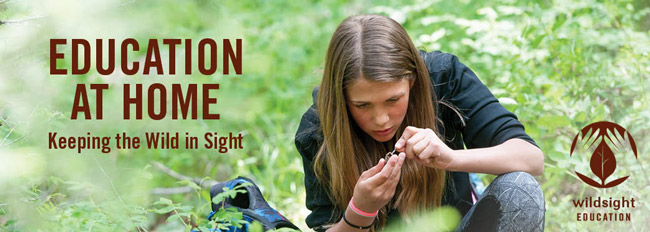
Photo: Julie-Anne Davies
|
|
,
In this newsletter you will find links to videos and activities to help our students and children slow down and take in some important lessons from nature. Plants, animals and microbes are amazing. They have spent billions of years engineering and testing ways to thrive on the planet. It’s no wonder many great inventions and medical breakthroughs have been based on lessons from nature. Read on for ideas and activities relating to biomimicry (human-made processes, substances, devices, or systems that imitate nature), a virtual wildlife walk, and a how-to guide for creating a backyard tracking plot. Other activities focus on the vital “ecosystem services” provided by nature which make life possible on this incredible planet Earth.
|
|
|
|
|
|
|
|
Sit Spots & Nature Journaling
During their sit spot this week, we are asking learners to really think about all the critical things that we get from nature. Some of the most obvious “services” that healthy ecosystems provide for humans are clean water, food, and shelter. Our Nature’s Services Writing Prompts challenge students to look a little deeper into the many ways nature makes our planet a place where life can thrive.
|
|
|
|
|
|
|
|
Wildlife Walk
Wildsight educator Dave Quinn will take your students on a virtual wildlife walk, sharing some of his discoveries and providing some great ideas and resources. Students are sure to find inspiration to go on their own nature walk, whether in their yard, around the block or in a local wild space. Place-based learning at its finest!
|
|
|
Backyard Tracking
Have you ever wondered what wildlife is moving through your yard when you’re not looking? This engaging lesson plan and activity guides learners in creating their own animal track plot to capture signs of wildlife and learn some basic animal tracking skills.
|
|
|
|
|
|
|
|
|
Eiji Nakatsu, the Shinkansen 500 train’s chief engineer and an avid bird-watcher, asked himself, “Is there something in nature that travels quickly and smoothly between two very different mediums?” The answer and engineering inspiration? The Kingfisher.
Biomimicry
What is biomimicry? Biomimicry is taking inspiration from nature to solve human challenges. Many people, from doctors and engineers, to physicists and athletes, have looked at what nature does really well, then used these ideas to solve human problems. Students will learn more about biomimicry by watching this video and be motivated to take their own biomimicry challenge in this lesson plan. Who knows, the inspiration for the next great invention might be right in your student’s backyard!
|
|
|
|
|
|
|
|
|
The intact Columbia Valley Wetlands provide a range of critical services, from water filtration and flood control, water storage and wildlife habitat, to recreation and inspiration.
Nature’s Services
Nature is always hard at work providing us with shelter, clean water and air, food, medicine, building materials, a clean environment and many more critical services. Learn more about these nature services, also called ecosystem services, and take a journey to Planet Zork in this exciting lesson straight from Wildsight’s Classroom with Outdoors program.
|
|
|
|
|
|
|
|
Flying into your inboxes next Wednesday: Intro to Backyard Birding!
Celebrate International Migratory Bird Day on Saturday, May 9th, then plan some bird-related activities for your learners next week!
Join our learning community
Join our Wildsight Education at Home Facebook for more resources and to connect to an inspiring community of teachers, educators and parents.
Invite your friends and colleagues to sign up for our weekly Wednesday newsletter here.
|
|
|
|
|
|
|
|
|
|
|
|
|